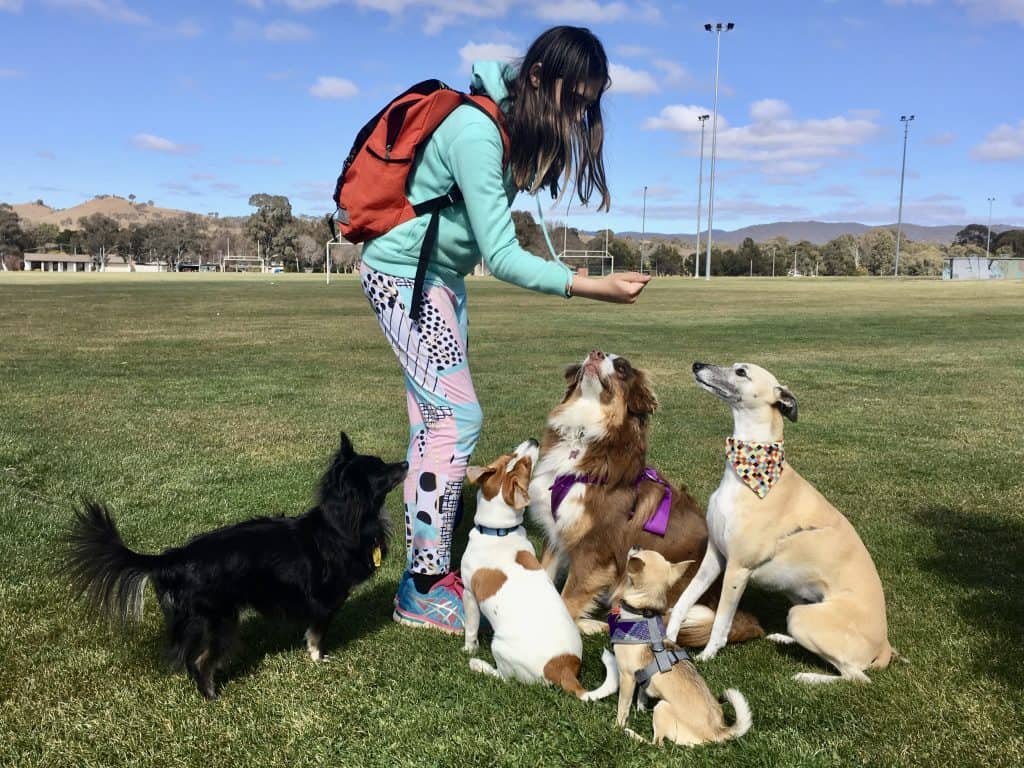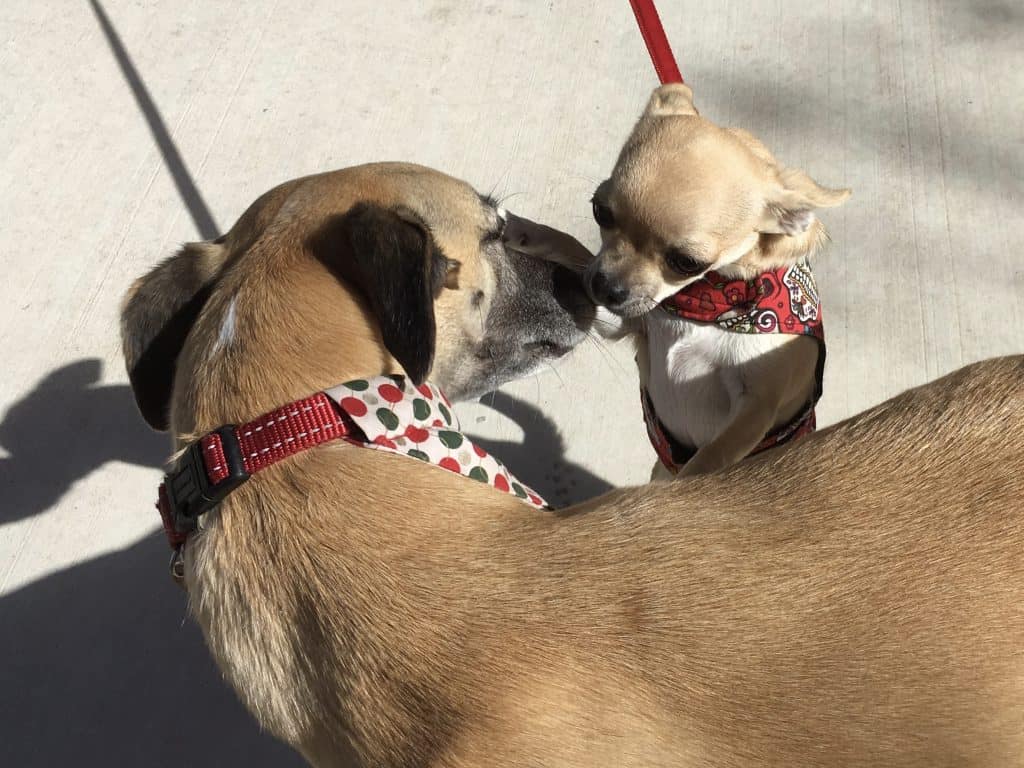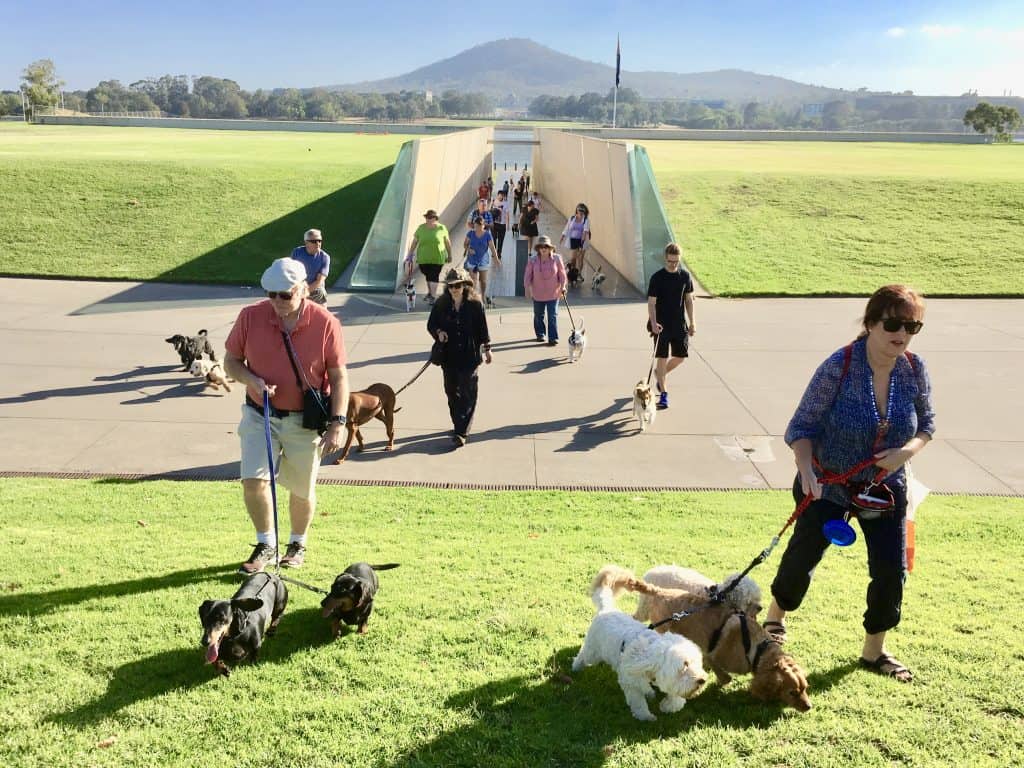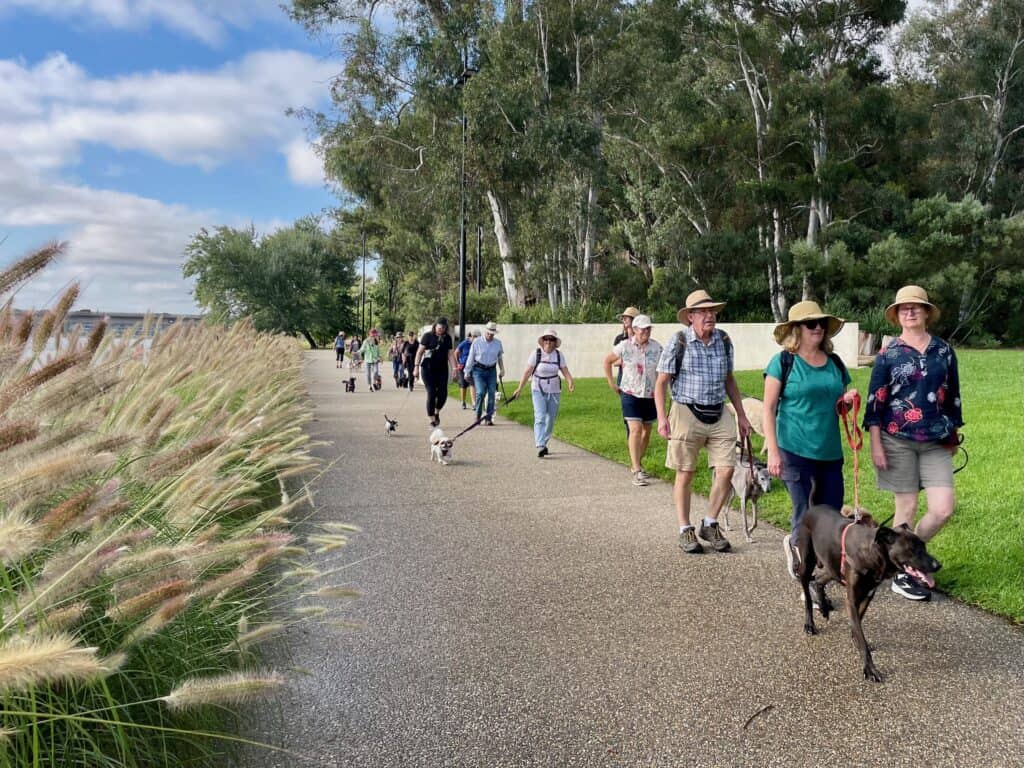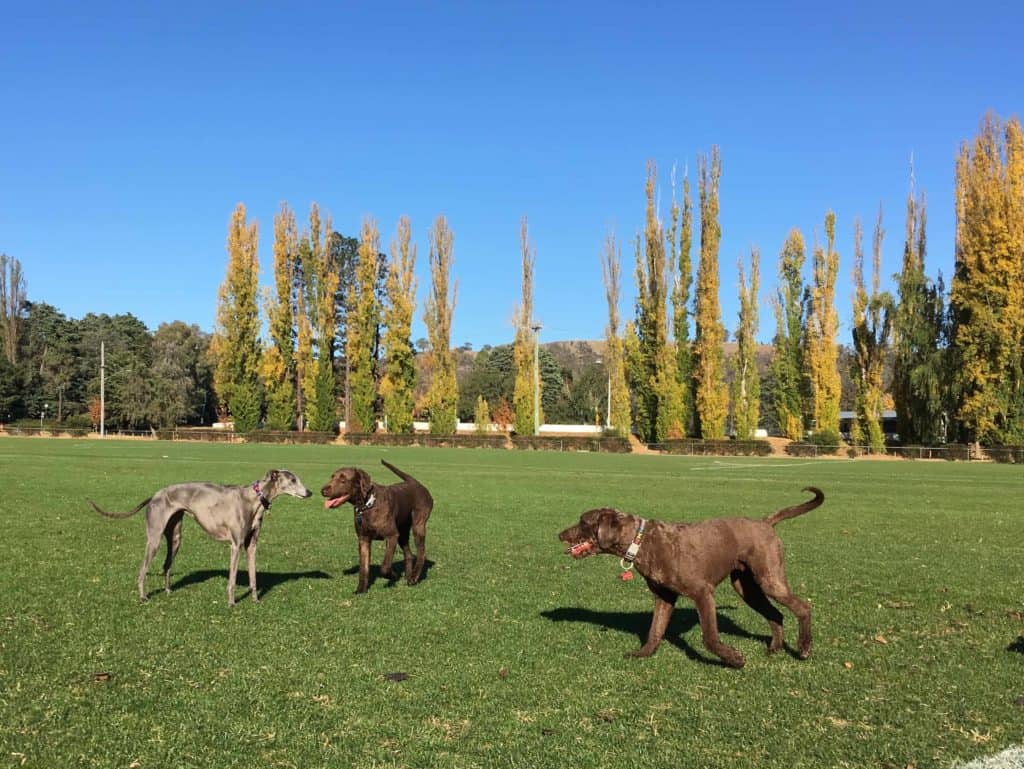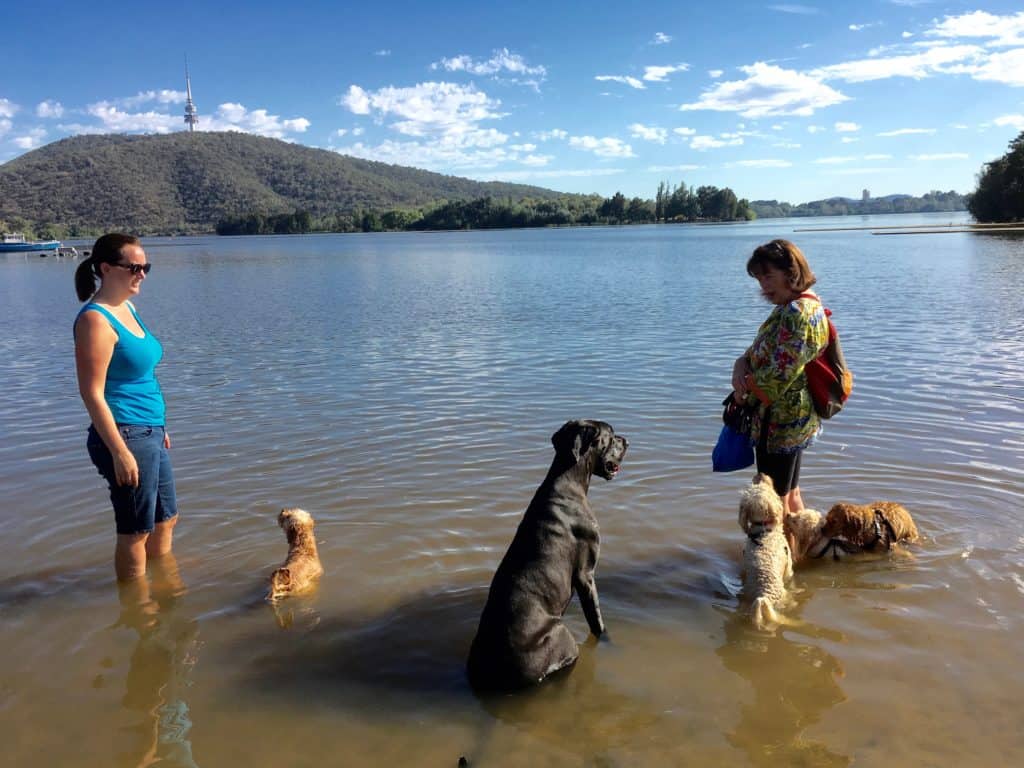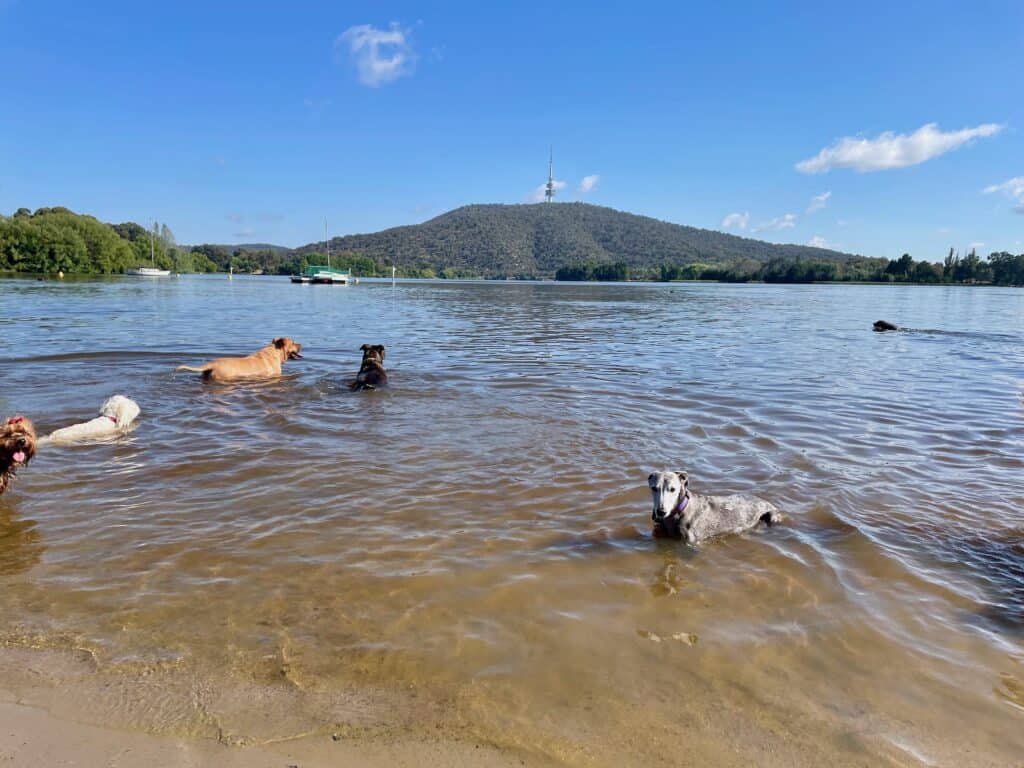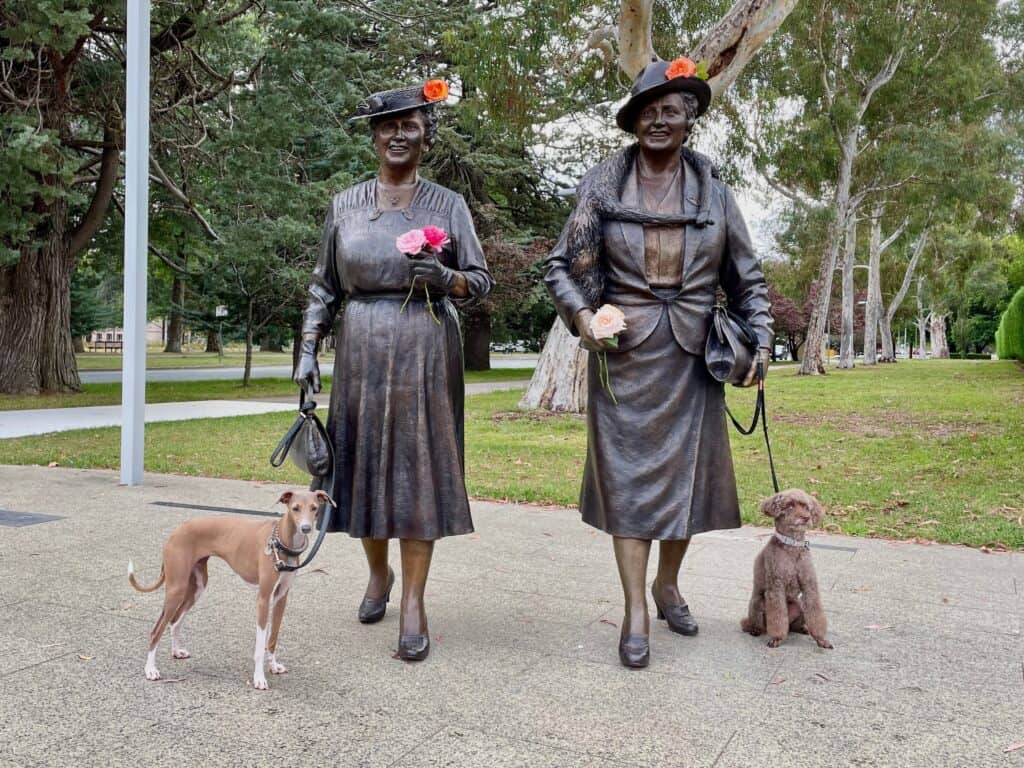The current ACT Government laws concerning dogs in public places were updated several years ago. But it's easy to be confused about these regulations and how they work in practice.
Canberra Dog Walks has developed this ‘dummies’ guide to the current laws after seeking clarification directly from the helpful staff at the ACT Government’s City Services Directorate. It covers in simple terms the seven most important things you need to know when out and about with your dog.
This guide is based on information provided by the ACT Government in written responses to Canberra Dog Walks' questions and should steer you in the right direction, but if you are still unsure about a specific situation, seek advice from Access Canberra. You can also refer to the Government's own website information about dogs in public spaces.
If you don’t agree with the rules and regulations, or the current off-leash or on-leash areas, please voice your concerns by email to co*****************@*****ov.au or write to Tara Cheyne, Minister for City Services.
Effective control
Off-leash and on-leash areas
Dogs on paved paths
Dogs on sports grounds
Dog swimming spots
Dog prohibited areas
Dog droppings
1. When you are in a public place with your dog, it must be under ‘effective control’, whether it is on-leash or off-leash.
The regulations explain that a person has ‘effective control’ if they can prevent their dog from approaching other people or animals.
It doesn’t mean dogs must never approach other people or animals. It does mean that dog walkers must be able to prevent unwanted, risky or unsupervised approaches. This can be either by restraining the dog with an appropriate leash or, if in an off-leash area, by calling an off-leash dog away.
This is not a new regulation but it’s an important central principle of dog walking responsibilities. While most dogs are harmless, some people (and dogs) have a genuine fear or dislike of dogs and this should be respected.
2. You need to be aware which public areas are designated off-leash, ‘conditional' off-leash, on-leash, or where dogs are prohibited altogether.
This information is available online on the ACT Government’s dog exercise areas map.
The map shows off-leash areas shaded green; ’conditional’ off-leash areas shaded orange; on-leash only areas unshaded; and dogs-prohibited areas shaded red. The Government provides a brief explanation of these terms in the left-hand column of the map page.
It's worth checking the status of your dog walking routes from time-to-time, especially if you are a long-time local. The map can be updated without notice and you could inadvertently be unlawfully walking your dog off-leash in an on-leash area. Alternatively, you could be walking your reactive dog on-leash in an area you think is on-leash only but has become an off-leash area.
When opening the online map, make sure you’ve clicked the dog exercise areas icon at the top of the left-hand column. Then use the plus and minus tools on the map to zoom in and out. Click and drag to move the map around to see different areas.
The online map is clunky, slow to load and it’s not always easy to identify boundaries. However there are plans to improve its performance and produce a mobile-friendly version so dog walkers can easily check areas while on the go.
3. Dogs must be on leash on all paved footpaths and cycle paths, including 10 metres on either side of these paths, even when the paths are located in a designated off-leash area.
The first component of this rule is not new. However the additional requirement of a 10 metre buffer was introduced in 2019, in the Government’s words, ‘to increase clarity and safety’.
The new component was the primary reason that in 2019 Canberra dog walkers lost off-leash access altogether to a large number of informal parks bisected by paved paths.
If you are an elderly or less mobile walker, or a dog walker with young children pushing a pram, who previously used pedestrian footpaths in off-leash parks, your access to off-leash walking has been significantly reduced and you’ll need to bear this in mind when choosing where to walk. However, you can find detailed directions for eight pram-friendly dog walks on our website that are paved the whole way and pass easily accessible off-leash parks.
4. Dogs are prohibited on sports grounds during formal sporting events but allowed off-leash at other times.
Most Canberra sports grounds and ovals which are not fully fenced are ‘conditional’ off-leash areas (shaded orange on the online map). This means dogs are allowed off-leash on nearly all open ovals and sports grounds unless formal sports are underway. If formal sports are underway - that is the field has been booked/hired by a sporting organisation - dogs are prohibited from that field altogether.
This is not a new regulation and appears straight forward, however it is worth checking the detail of your local sports ground on the dog exercise areas online map to see whether you can still walk your dog on-leash or off-leash in nearby areas or on another part of the sports ground.
Some sports grounds (shaded orange) are surrounded by on-leash areas (unshaded). So if your daughter is playing soccer on one of these sports grounds one Saturday, you could still cheer her on while taking the family groodle for an on-leash outing adjacent to the game.
Some extensive sports grounds are made up of several ovals/fields, which may not all be booked at the same time. This means you can still walk your dog off-leash on an unused oval, while sports games are underway in adjacent ovals.
Some sports grounds are adjacent to off-leash areas (shaded green). Again, you can walk your dog off-leash nearby while a game is underway.
The Mawson District Playing Fields, Gordon District Playing Fields and Giralang Ovals are examples of sports grounds providing all these options.
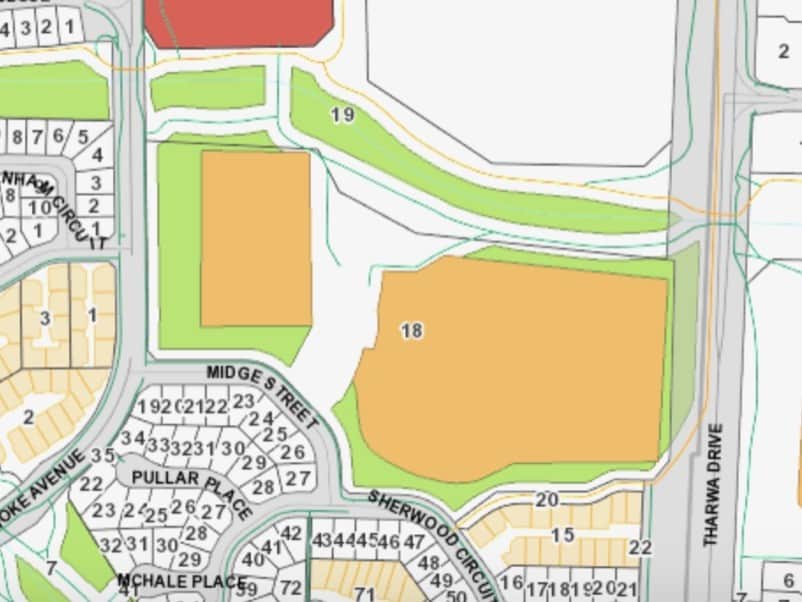
Of course, it would be foolish to let your dog off-leash adjacent to a sports game unless you have reliable, effective control of your dog. Some dogs find joining in a match involving balls and running children simply irresistible.
If you'd like to explore Canberra's off-leash sports grounds, we list our favourite, and safest, locations on our post on Canberra's best off-leash meeting places.
5. Dogs may only swim in lakes and rivers where signposted or indicated on the ACT Government dog exercise area map.
This is not a new regulation but it's worth checking regularly whether your favourite dog off-leash swimming spot is still available. After the 2019 review, some well-known and popular off-leash swimming spots became dogs-prohibited (e.g. Lake Ginninderra opposite the dog park) while several new off-leash swimming spots were introduced (e.g. Lake Ginninderra near Joynton Smith Drive, Point Hut District Park Pond opposite the McGilvray Close car park, and Yerrabi Pond near to Benaroon Circuit).
Again, you can find these spots (shaded green) on the online map.
You’ll also find a comprehensive up-to-date guide to the best dog swimming spots on the Canberra Dog Walks website.
6. Dogs are prohibited from within 10 metres of children’s playgrounds and powered BBQ sites when in use.
This regulation has been in place for some time and is, thankfully, straight forward and unambiguous. If your dog is with you when taking your child to play on the swings, your dog will need to be tethered at least 10 metres away. The same applies if taking your dog on a family outing using a powered BBQ site.
For a more detailed list of other places dogs are prohibited, go to the ACT Government website and check the dog exercise areas online map for red shaded areas.
7. You must pick up after your dog, and carry with you appropriate equipment to pick up droppings.
You know this already but it's surprising how many dog walkers venture out unprepared. You may be issued with an on-the-spot fine for not picking up after your dog or leaving home without those poo bags.

